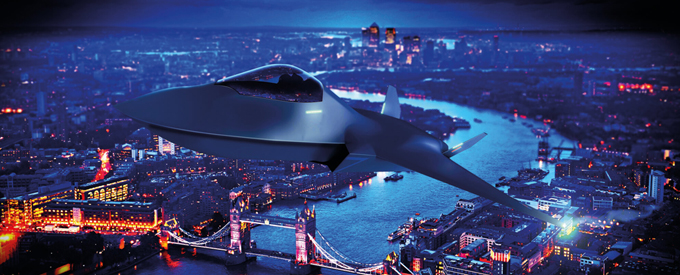2020-09-01
International Collaboration Gives Tempest a Boost
Recently, UK, Sweden and Italy began trilateral industry discussions to strengthen collaboration between the three nations, as they develop world-leading future combat air capability. The new trilateral framework sees industry from the three nations bringing together their skills and expertise in the combat air sector to collaborate on the research and development of cutting-edge technologies.
The three national industries comprise leading defence companies from the UK (BAE Systems, Leonardo UK, Rolls Royce and MBDA UK), Italy (Leonardo Italy, Elettronica, Avio Aero and MBDA Italia) and Sweden (Saab and GKN Aerospace Sweden).
The announcement builds on bilateral discussions, which have taken place between the UK and Swedish and Italian industries and establishes a trilateral industry group. Together, the companies will assess common routes to future combat air capability using their know-how, expertise and technology development activities across current and future combat air systems.
This framework is another step on the path towards a full agreement between these national industries to formalise areas of joint collaboration on future combat air systems development.
These national industries each directly employ tens of thousands of people and support many highly skilled jobs through their supply chains, underpinning national security and supporting economic prosperity in these countries.
The UK has existing co-operation with Sweden and Italy. All three nations industries and militaries are partners in the joint development and operation of the Meteor beyond visual air-to-air missile that is arming Gripen, Eurofighter Typhoon and F-35. Swedish-made chaff and flare dispensers are used on UK Typhoons and Saab’s Giraffe radar is a key part of the UK’s Sky Sabre ground defence system. Swedish Gripen E aircraft are equipped with radars designed and built by Leonardo in Edinburgh. Meanwhile, both the Royal Air Force and the Aeronautica Militare operate the same, potent fleet of Eurofighter Typhoon and F-35 aircraft, part of more than 50 years of close collaboration in combat air.
Powering Tempest
Tempest is the UK Royal Air Force’s (RAF) next generation combat aircraft, coming into service from 2035 to replace the Typhoon. To meet evolving threats, Tempest is designed as a next generation air combat system which is agile, flexible, connected, rapid to update, and affordable.
Tempest will bring a ‘plug and play’ approach, where software and hardware can be easily changed in and out depending on the capability and functions needed for a mission. That could be different kinds of weapons, sensors, or fuel tanks. This innovation removes the usual rigid structures of assembly and will make manufacturing more cost effective and flexible than before.
Tempest will provide several modes of operation, combining manned, unmanned and optionally-manned platforms, with onboard and offboard data processing and a range of pilot decisions aids when manned flight is being conducted. This is called scalable autonomy.
Tempest needs a range of high-density power and propulsion system to be world beating. To achieve this, team Tempest is developing advanced composite materials and additive manufacturing to produce lightweight, power dense configurations capable of operating at higher temperatures.
Team Tempest is also developing world-leading electrical generation technology and intelligent integrated power management to power Tempest’s advanced sensors and effects, particularly those which are laser-based. They will need much more electrical power than previous generations of aircraft.
This integrated power approach reduces the number of energy exchanges, maximising the potential of the gas-turbine as the primary power source. The development of these electric technologies is also expected to benefit civil aerospace and other sectors in their drive towards a sustainable future.
Furthermore, Tempest’s cockpit is planned to be without a single physical dial or screen. Instead, pilots will wear a next generation augmented and virtual reality helmet that will project interactive cockpit displays and controls directly in front of their eyes.
The Tempest operator will be able to think and act two to three steps ahead of their adversary because of the advanced and highly integrated sensors, non-kinetic effects, and communications systems. This huge advantage will allow them to take the fight to the enemy and deliver a range of missions including team defence and surveillance.
All of these systems will be designed to work seamlessly together, unlike current fighter jets that tend to be separate pieces of equipment, such as separate radar and electro-optics.
Operators will be able to make decisions with more confidence because they are not relying on single sensors. Instead, multiple types of sensors will work in concert to gather information, which is automatically cross-checked and cross-referenced by the Tempest system.
Tempest will constantly mine and coordinate data from multiple sources, such as other aircraft, to provide extremely reliable and useable information.
Digital Future
A digital future combat air system will produce unparalleled volumes of data, which can be used to transform the delivery of mission support and new capability. For instance, ‘digital twins’ can be created to test new components.
Innovative weapons systems and effectors are at the heart of Tempest’s cutting-edge design. Tempest needs to support existing weapons, planned weapons, and the weapons of the future. For instance, the next generation Beyond Visual Range Air-to-Air Missile Meteor and the network enabled precision surface attack missiles of the SPEAR family of weapons, will be optimised for Tempest. Effectors will be used to protect Tempest by helping to assess and evaluate incoming threats, and then in managing the deployment of the appropriate method to defeat it.
Tempest will have the capability to carry weapons internally, rather than being attached externally, to be highly survivable in a combat role. The weapons of the future could include directed energy, hypersonic missiles and swarming technology assisted by Artificial Intelligence and machine learning.


No Comments